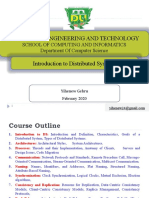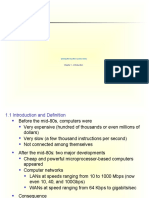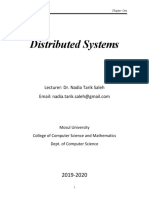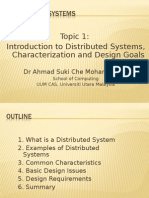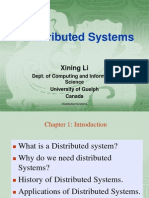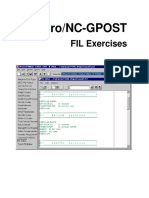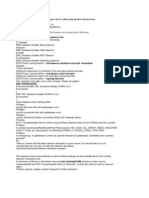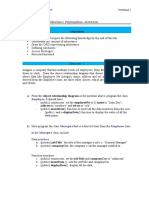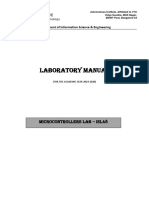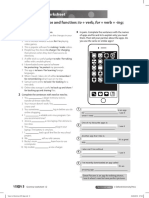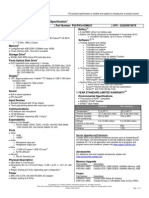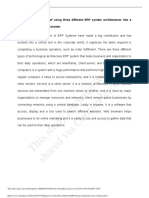0% found this document useful (0 votes)
60 views57 pagesCh1 Introduction
The document outlines the course 'Introduction to Distributed Systems' (CoSc 4038), detailing its objectives, learning outcomes, and evaluation methods. It introduces key concepts of distributed systems, including their design goals, types, and the role of middleware, while addressing challenges such as scalability and transparency. The course aims to equip students with the knowledge to design and implement distributed systems effectively.
Uploaded by
asnake ketemaCopyright
© © All Rights Reserved
We take content rights seriously. If you suspect this is your content, claim it here.
Available Formats
Download as PDF, TXT or read online on Scribd
0% found this document useful (0 votes)
60 views57 pagesCh1 Introduction
The document outlines the course 'Introduction to Distributed Systems' (CoSc 4038), detailing its objectives, learning outcomes, and evaluation methods. It introduces key concepts of distributed systems, including their design goals, types, and the role of middleware, while addressing challenges such as scalability and transparency. The course aims to equip students with the knowledge to design and implement distributed systems effectively.
Uploaded by
asnake ketemaCopyright
© © All Rights Reserved
We take content rights seriously. If you suspect this is your content, claim it here.
Available Formats
Download as PDF, TXT or read online on Scribd
/ 57
